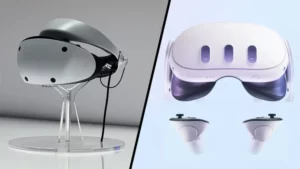Have you ever imagined what your life would look like if you woke up to nothing but black, white and grey one day? No, we aren’t talking about the colours in your rooms alone. You could be someone who is an avid monochrome lover and that’s fine. But what if the entire world went colourless? Will you be able to distinguish a pink rose from a yellow one then? A white tiger amidst an ambush of yellow? How about the beautiful changing colours of the sky throughout the day? Now, before your brain starts running errands and questioning more such things, you must have figured out one thing for sure- colours make things more attractive, noticeable and beautiful.
We’re so used to living a colourful life that we hardly ever stop by and notice how they affect us, our surroundings and everything in general. This extraordinary phenomenon called ‘colours’ that has been nothing less than a blessing to the world has become just another ordinary thing today. Let us look at a different side of this topic today to understand how colours affect our mood and emotions.
Colours & their Psychological Effects
Colours play an important role in defining or characterizing a particular mood, person or object. They stir emotions, draw consumers to products and have a huge impact on our memory/ recognizing ability. They can create different feelings and evoke different emotions. They can also make us feel happy or sad, hungry or relaxed, dull or refreshed.
Sir Isaac Newton developed the very first circular diagram of colours, what is known as ‘The Colour Wheel’ today, sometime towards the latter half of the 17th century. Since then, artists and scientists have studied and designed numerous variations of the concept coined by him.
A colour scheme is a combination or arrangement of colours that group colours according to their combined appeal and the feeling that they generate. Artists can manipulate colours by changing their hues and values. Therefore, one particular colour can have various shades right from the lightest pastels to deepest solids, each one of them having different effects on an individual. However, there are two universally accepted, basic colour schemes when it comes to grouping colours, namely:
1) Warm colours
2) Cool colours
An image both these colour schemes would demonstrate an excellent contrast of temperature creating more complex relationships between the colours. Let us take a closer look at the differentiation and how every single colour in each of the schemes impact different aspects of our life.
· Warm colours
This particular scheme consists of yellow, red, orange and combinations of these. As the name itself indicates, they usually tend to make you think of warm things such as warmth, heat and the sun. When considered visually, these colours look as though they come closer, which is one reason why they are often used to make large spaces look cosier. Say, for instance, if you have a huge living room that you want to look more compact, try choosing more warmer tones for it such as browns or oranges to induce that feeling into it.
Warm colours advance, affecting the perception of depth. This theory is based upon the fact that our eyes tend to adjust themselves when focusing on the colours of different wavelengths. These colours are placed next to each other on the colour wheel and are known to induce feelings of optimism, energy and happiness within a person. Although, red can increase a person’s appetite and orange can slightly irritate the eyes at times. Fast food brands such as KFC and Mc Donald’s are excellent examples of this theory since they usually incorporate these colours to make people get hungry and eat quickly.
Ø Pantone Red
Pantone Red (Ribbon) can safely be labelled as the most dynamic of all colours. It is also the warmest of them all and is known to trigger contrasting emotions since it is associated with love and passion as well as danger and anger at the same time. It can readily make a person feel excited and increase the rate at which their heart beats. Hence, if one wishes to assign a particular element as the focal point of a particular design or make it attention-seeking, they can choose red without having second thoughts.
Ø Pantone Yellow
Pantone Radiant Yellow is known to be the most lively of all warm colours. It is often associated with ambition, laughter and sunshine. Shades of yellow instantly make us feel cheerful and fill us with positivity. On the contrary, this colour also tends to reflect a considerable amount of light and can, therefore, irritate the eyes at times.
Ø Pantone Orange
This colour is known to enhance the feeling of vibrancy and joy. It is as attention-seeking as red but at the same time, isn’t overpowering. Orange is assertive and yet restful- it portrays a great amount of energy and is yet inviting. Therefore, it can be effectively used when one wants people to take action over something or subscribe to it.
· Cool colours
This colour scheme consists of blue, green and purple and is usually on the soothing or calming side. They also express sorrow and melancholy. These colours tend to make you think of things that provide a calming effect such as water, plants and the sky. Cool colours aren’t overpowering and tend to recede when it comes to perceiving spaces. For example, if one wishes to make a small space look enormous and peaceful at the same time, cooler tones such as blue and lavender can be effectively used.
Ø Pantone Blue
The colour blue renders a feeling of vastness, etherealness and tranquillity. It is also often associated with trust and security. Therefore, seeing this colour causes our body to generate chemicals that are calming in nature. Deeper blues are great for corporate designs since it has a highly professional feel to it whereas lighter hues of blue generate a friendly feeling. Excellent examples of this finding can be demonstrated by the fact that both ‘Twitter’ and ‘Facebook’ have blue logos.
Ø Pantone Purple
Purple is a combination of blue (which happens to be a cool colour) and red (a warm colour), hence it is used to help spark innovation as well as creativity. The brands ‘FedEx’ and ‘Yahoo’ are excellent examples of how purple invokes innovation. This colour is also associated with wealth and royalty. Hence, its darker shades are often implemented in a design to make it look more luxurious whereas the lighter ones are used to deliver mystery or romance.
Ø Pantone Green
This colour symbolizes freshness, new beginnings and well-being. It is one of the easiest colours on the eyes and can effectively be used to induce calmness or balance in a design. For the very same reason, our entire body feels greatly relaxed when we cast our eyes upon huge patches of plantation or greenery. Green is also used to depict security and growth.
Synopsis of Color Affecting Mood and Emotions
Colours are extremely authoritative communication tools and can be used effectively to cause psychological reactions concerning behaviour and emotions. They also affect our productivity and how others perceive us. Therefore, picking a colour that will work with you, and not against you is vital when it comes to achieving growth, happiness and success.








